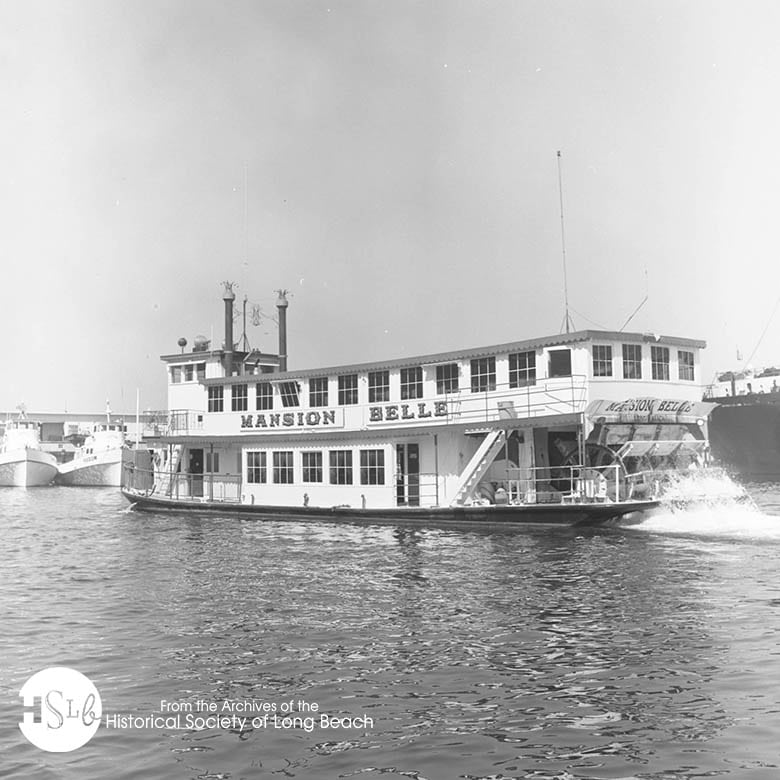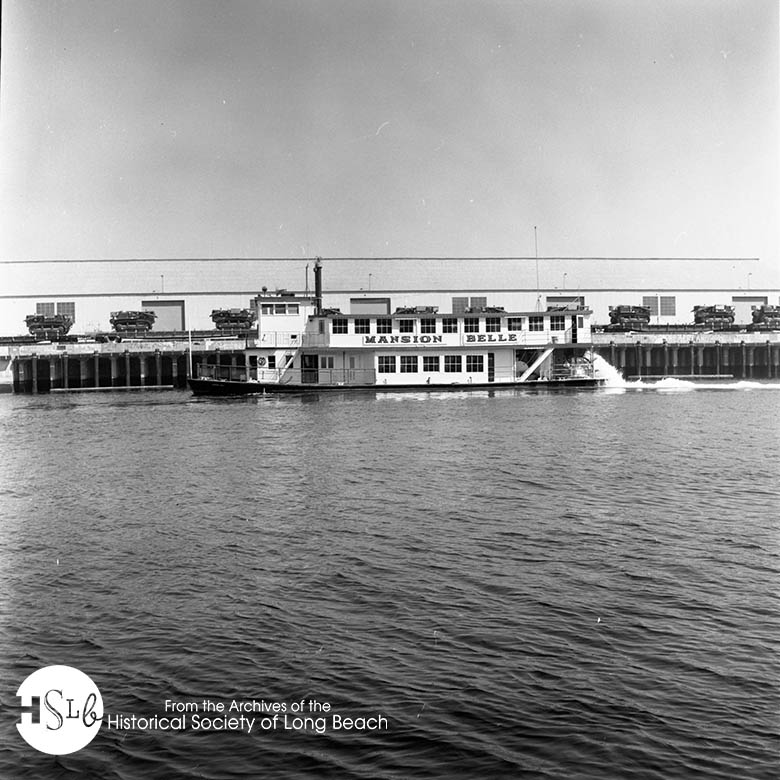
By Brian Chavez
In the summer of 1966, the Port of Long Beach welcomed the sternwheeler Mansion Belle to its waters.
From its berth at Pierpoint Landing, it went out Wednesday through Sunday into the inner, middle, and outer harbor, giving passengers a unique perspective of a rapidly growing port. The charter vessel featured dinner, cocktails, live music, and promised “a return to the romantic riverboat days.” Like a classic Hollywood tale, this glamourous star worked its way from the rivers of rural America onto the big silver screen and life in beautiful Southern California, to eventual cultural obscurity.
The Mansion Belle first came into service just north of Colusa County, California in 1942. Built for the U.S. Army Corps of Engineers by Berkeley Steel Construction Company, its early years were spent operating as a snag boat named Putah, floating up and down the mighty Sacramento River. Marshes, fields of grain, cattle and small farms dotted the surrounding landscape as far as the eye could see. Flooding and general use of the river repeatedly polluted the Sacramento with hazardous snags. The Putah’s 98-foot long barge only submerged 2 feet below the water, making it capable of navigating through shallow, debris-filled areas. Using its mighty strength, the vessel pulled and removed debris away from the river, clearing the path for other vessels traveling through this influential California waterway. It served in this capacity for a little under a decade.
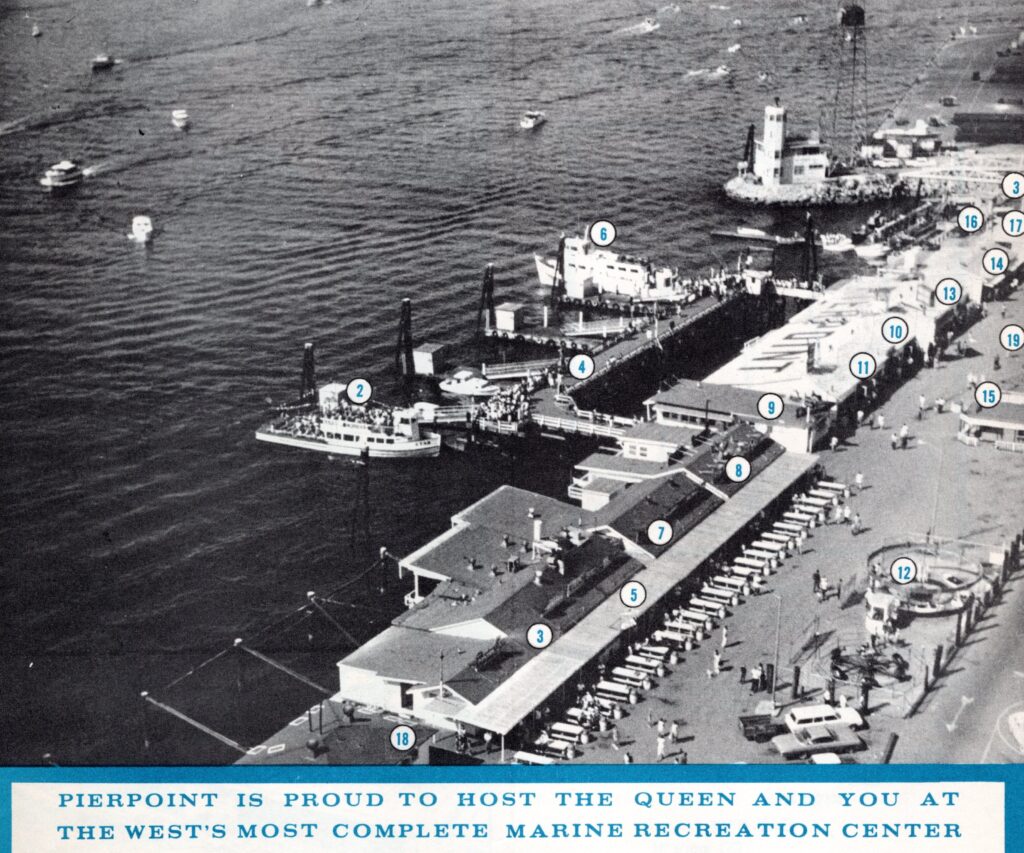
In 1954, the Putah got its big Hollywood break. Wayne-Fellows Productions, Inc., owned by John Wayne and Robert Fellows, spotted the utility barge and saw it a perfect fit for their upcoming motion picture—Blood Alley (1955). This anti-communist film told the story of Chinese refugees fleeing communist China in a nineteenth-century wood-burning riverboat headed to British Hong Kong. The starring roles went to John Wayne as Captain Tom Wilder, supporting actress Lauren Bacall as Cathy Grainger, and the Putah as the Chiku Shan sternwheeler. The vessel was refitted with a faux superstructure and brown paint that gave it a truly aged appearance. In the film, Tom Wilder and the Chiku Shan safely deliver the refugees after a perilous journey. Though the film was substantially promoted it was not a blockbuster hit, the Putah moved on to new things thereafter. Today, the film is often forgotten in popular memory but recognized by some scholars for its historical significance as a cultural product of American attitudes towards communism in the Cold War Era.
The Parisi family in Northern California purchased the Putah from Wayne-Fellows Productions and refitted her for passenger use in 1956. The vessel was initially drydocked in Stockton where it received a coat of fresh white paint, a new enclosed upper deck and decorative features that gave the ship a comfortable and “romantic” riverboat appearance. At this time the vessel’s name changed to the Mansion Belle. The vessel offered evening cruises through the Sacramento Rivers and the Freeport and Steamboat Sloughs. It also offered trips to the Parisi’s River Mansion restaurant, where passengers could enjoy a fine Italian meal along the water’s edge. Over the coming years, the Mansion Belle switched a few hands but continued to offer the same services. By 1964, the Mansion Belle was in Southern California serving as a popular party boat in Marina Del Rey and by 1966 it had made its way to Long Beach at Pierpoint Landing.
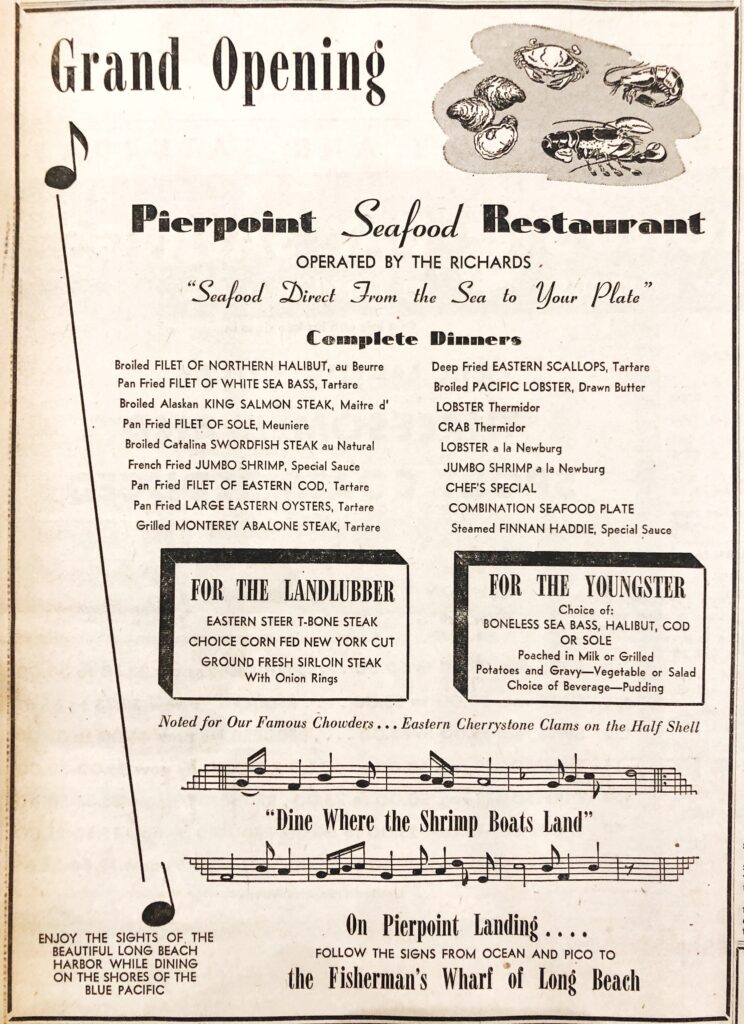
Pierpoint Landing was known as the “Fisherman’s Warf of Long Beach” and was not unlike Ports O’ Call Village in San Pedro just a few miles away. It was located at the far end of Pico Ave along Pier A (Pier F today) in the Port of Long Beach. Pierpoint started as a one-boat sportfishing landing in the late 1940s and rapidly developed into a seaside destination with millions of annual visitors in the following two decades. Visitors to Pierpoint could experience harbor tours, dinner cruises, a sea lion show, restaurants, curio shops, and sportfishing charters. Pierpoint leased the land from the Harbor Department but the growth of the Port along the southeastern corner eventually pushed Pierpoint out by 1971. New sites were proposed with some of the businesses moving to Berth 55, but it eventually became a relic of the past forgotten by a changing Long Beach.
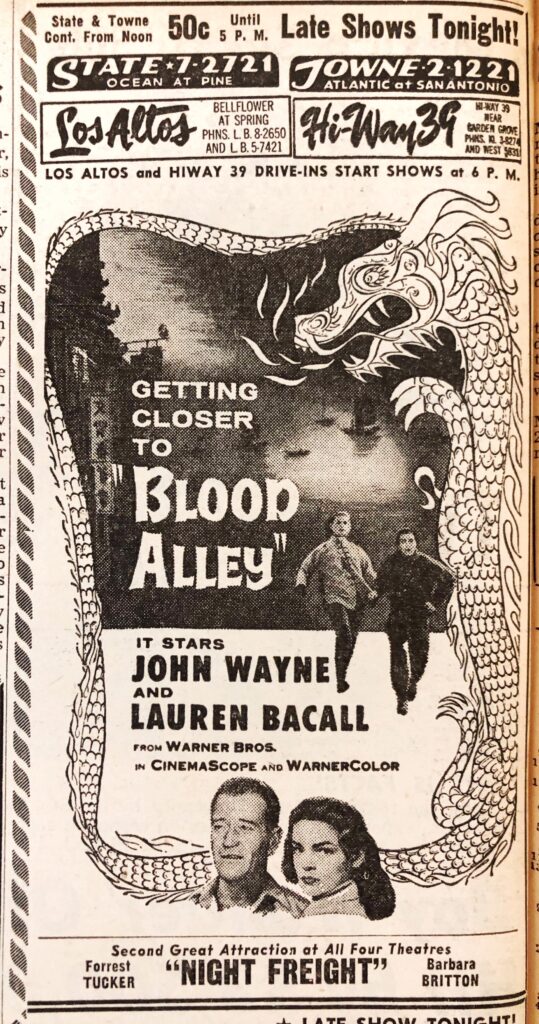
These Risinger images of the Mansion Belle capture the height of activity at this famed tourist destination. In September 1966, the Long Beach Press-Telegram announced an upcoming grudge race between the Mansion Belle of Pierpoint Landing and the sidewheeler Princess of Ports O’ Call at the First Annual International Sea Festival hosted by the City of Long Beach.
Just a few days after this announcement Joseph Risinger went out on a bright September day to catch images of Long Beach’s own sternwheeler as it toured the Port of Long Beach. Though the Mansion Belle was plagued with mechanical and structural issues most of its career, the ship nonetheless gave its all and won the race. It only spent a brief period of time in the Port of Long Beach yet it captured the attention of so many social clubs, residents, and tourists who came to experience this unique ship. After Pierpoint, the vessel passed through more hands until it eventually ended up in Northern California once more.
Like Blood Alley and Pierpoint Landing, the Mansion Belle is a product of her time, a reminder of our ever-changing cultural landscapes. Today it has become a faded star washed up on the banks of the Sacramento River. It is shell of its once adventure-filled past, visited by the few fans who remember her once shining glory through Hollywood and harbors.
